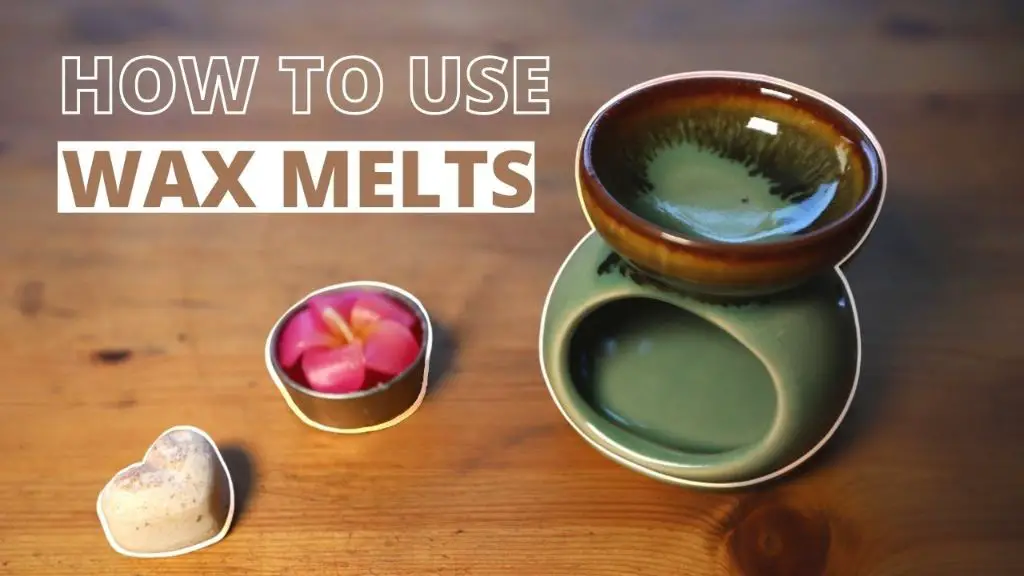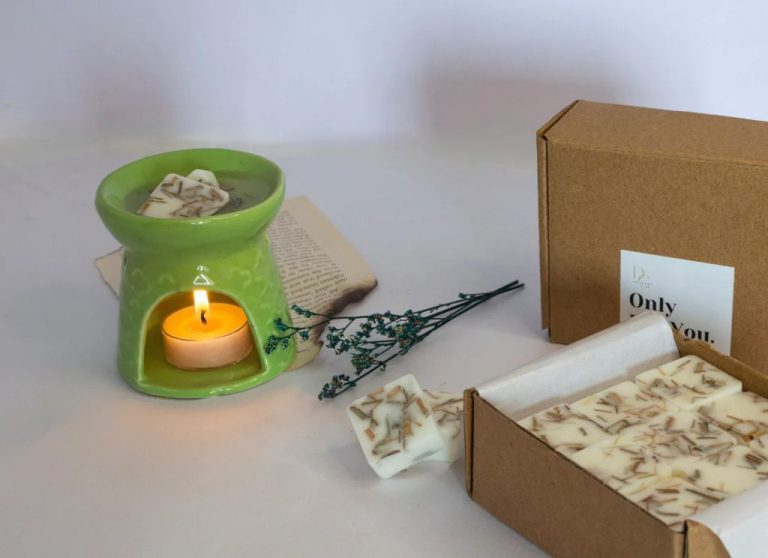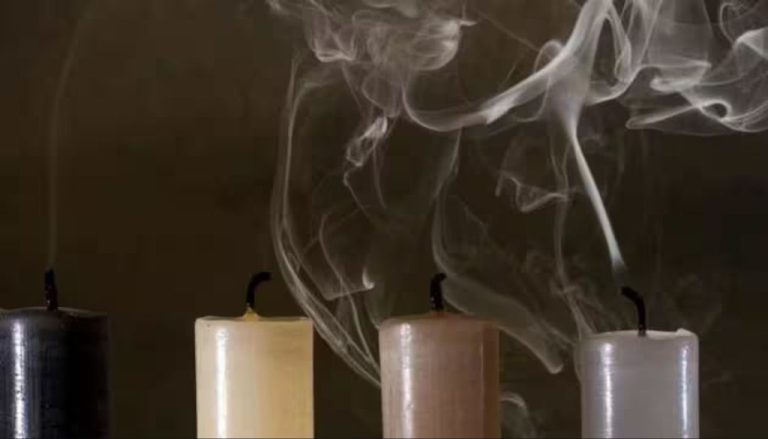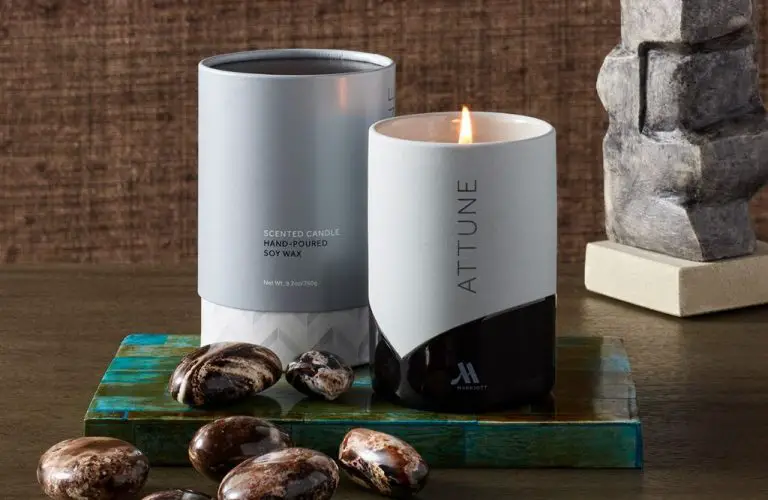What Temperature Should Wax Be For Wax Melts?
Ideal Temperature Range for Melting Wax
The ideal temperature range for melting wax for wax melts is between 120-185°F (49-85°C). This temperature range is recommended because it allows different types of wax to fully melt without getting too hot.
Most wax melts are made from soy, paraffin, or a soy-paraffin blend. Soy wax melts between 115-135°F (46-57°C), paraffin melts between 135-145°F (57-63°C), and soy-paraffin blends melt around 120–185°F (49-85°C) [1]. Heating the wax to at least the minimum melting point ensures it will become fully liquid. Going above the maximum melting point risks making the wax too hot and flammable.
Maintaining a wax temperature in this ideal range allows it to be poured easily without cooling too quickly. Most waxes become thin and pourable between 160–185°F (71-85°C). Above 200°F (93°C), wax can start to smoke and degrade in quality. Keeping wax under 200°F ensures a high quality end product.
In summary, heating wax between 120-185°F provides the right balance to melt different wax types fully while avoiding risks from excess heat. This temperature range helps wax melters get the best results.
Factors That Affect Melting Temperature
The type of wax used is the primary factor that determines its melting temperature. Common waxes used for wax melts include:
Paraffin Wax – Has a melting point range of 115-142°F (46-61°C) according to The Melting Point of Paraffin Wax. The wide melting range is due to the variation of hydrocarbon chain lengths in paraffin wax.
Soy Wax – Typically melts between 113-127°F (45-53°C) as noted in Which Temperature Does Candle Wax Melt? The melting point can vary based on the soy wax’s hydrogenation level.
Beeswax – Has a high melting point of 144-149°F (62-65°C) according to Melting Point Factors for Common Waxes. This makes it ideal for candles but less commonly used for wax melts.
Added fragrances and colorants can also slightly alter the melting point of wax. Following manufacturer instructions for melt temperatures can prevent issues.
Using a Wax Warmer
One of the most popular and convenient ways to melt wax for wax melts is by using an electric wax warmer. Wax warmers are specifically designed for melting wax and keeping it at the ideal temperature. They consist of a heated base plate or bowl and plug into an electrical outlet. Many advantages come with using a wax warmer:

Wax warmers allow you to precisely control the temperature so you don’t risk overheating the wax. The optimal temperature for most wax melts is between 120-150°F. Wax warmers hold the wax at a steady temperature instead of continuing to heat it like on a stovetop.
They are very safe and minimize the risk of burns. The wax warmer contains the melted wax and doesn’t require pouring hot wax. The low-heat plate also prevents overheating and fires.
Wax warmers make it easy to switch out scents whenever you want. Just turn off the device, remove the melted wax, wipe it clean, add different wax, and turn it back on.
The cordless, portable models give you flexibility. You can move them between rooms and take them anywhere there’s an outlet. This allows you to enjoy the wax melt fragrance in multiple areas.
Wax warmers are designed specifically for wax melts. This means you get the most efficient melting without wasting any wax. The contained warmers prevent wax from spilling over.
They provide hands-off convenience. Just add wax, turn on the warmer, and you’re good to go. The wax passively melts and releases fragrance. There’s no need to continuously monitor and stir wax.
Overall, wax warmers make it simple and safe to melt wax for wax melts. The controlled temperature and mess-free experience makes them an ideal choice over stovetops or ovens.
Melting on a Stovetop or in the Oven
Melting wax on the stovetop or in the oven can be an effective method, but it requires extra caution. According to the Harlem Candle Company, you should “Never melt wax in direct heat (e.g. don’t place it directly in a pot over the stove)” (source). When melting on the stovetop, place the wax in a heat-safe container set inside a pot of simmering water to create a double boiler. This gentle, indirect heat prevents the wax from overheating. Always stir melted wax to distribute heat evenly and prevent burning on the bottom. Melting in the oven calls for similar care – place wax in a heat-safe dish and use the lowest possible oven temperature, around 170°F. Check frequently and remove once fully melted.
Safety should be the priority when melting on the stovetop or in the oven. The Village Craft and Candle blog notes that you should use “constant supervision” when melting wax to avoid accidents (source). Never leave melting wax unattended, as this risks overheating and fire. Keep young children and pets away from hot wax to prevent burns. Allow melted wax to fully cool before handling to avoid injury.
Avoiding Common Melting Mistakes
One of the most common mistakes when melting wax is overheating it. This can happen if the wax is heated to too high of a temperature or left melting for too long. According to one source, “Overheating soy wax by either pot or microwave will change the chemistry of the soy wax and may cause the soy wax to separate.” (https://nzcandlesupplies.nz/blogs/news/soy-wax-troubleshooting)
When wax is overheated, a few negative things can happen. The wax can discolor and develop an unpleasant smell. Overheating can also cause the wax to lose its ability to hold fragrance properly. Additionally, the wax may start to “boil” and bubble more than normal, becoming thinner and not solidifying as well. If overheated severely, the wax structure can break down entirely. This results in a wax that is too soft or has an odd, gummy texture after cooling.
To avoid overheating, carefully follow the wax manufacturer’s instructions for melting temperature and times. Use a thermometer to monitor the temperature and don’t let it exceed the recommended amount. Remove the wax from heat as soon as it’s fully melted. It’s also wise to melt wax in smaller batches, which are less likely to overheat versus melting a large volume all at once. Being attentive and using proper equipment will help prevent common mistakes.
Storing Melted Wax
Proper storage of melted wax is important to prevent it from re-solidifying before you are ready to use it. Here are some tips for storing melted wax:
Pour the melted wax into heat-safe glass or metal containers. Glass jars or tin cans work well. Make sure the container is clean and dry before pouring in the wax. The container should be just large enough to hold the amount of wax you melted – don’t use a large container for a small amount of wax, as it will lose heat faster.
Place the container of melted wax in an area that retains heat, like on top of your wax warmer base or oven (turned off). The residual heat will help keep the wax liquid longer. Avoid drastic temperature changes by not moving it straight to the fridge or outside.
If you need to store it longer than a few hours, the melted wax can be kept in an oven or fridge to stay liquid. According to this source, the fridge is preferred over the freezer, as the freezer may cause some types of wax to frost or sweat when warmed again.
Whatever method you use, keeping the wax stored in a tightly sealed container is crucial to prevent evaporation and fragrance loss over time. Only keep melted wax stored this way for 2-3 weeks at most before remelting and using it.
Testing Wax Temperature
When working with wax melts, it’s important to know the temperature of the wax so you can pour it at the right consistency. There are a few options for testing wax temperature:
Digital thermometer – This is the most accurate way to test wax temperature. Look for a thermometer designed specifically for candle making that can measure high temperatures. Insert the probe into the melted wax to get a reading (Soy Wax Melts Guide and FAQ).
Infrared thermometer – An infrared thermometer can also be used to get a non-contact temperature reading by pointing the laser at the melted wax. This allows you to measure the temperature without submerging a probe.
Visual checks – For a low-tech option, you can check the wax visually to see if it has fully melted by looking for a glossy, liquid appearance. You can also test by dropping a small amount of wax into cold water to check that it solidifies at the proper consistency (Checking wax temperature).
Regardless of the method, testing frequently ensures the wax is at the ideal temperature before pouring into molds or jars.
Signs Wax is Ready
There are a few key signs to look for to determine when wax is fully melted and ready for use in wax melts:
The wax will become completely transparent and liquid, with no remaining solid pieces or clumps. Fully melted wax should have a consistency like water or light oil. Check for a smooth, uniform appearance throughout the melted wax.
The wax will be fragrant when ready. The aroma from any scented oils in the wax formulation will become noticeably stronger as the wax finishes melting. Give the wax a sniff test to ensure the fragrance is strong and evenly distributed.
Tiny bubbles may form on the top layer of the melted wax as it reaches ideal temperature. Some small air bubbles throughout the liquid wax are also normal. However, vigorous bubbling or foam indicates the wax is overheating.
Use a thermometer to test the wax temperature. Aim for 185-200°F for soy wax blends commonly used in wax melts. Paraffin wax melts optimally between 150-170°F. Refer to your specific wax instructions.
When a small spoonful of wax dripped onto a metal spoon solidifies after about a minute, the wax is likely ready for pouring into melt containers. Test the wax consistency and temperature with a spoon to double check.
Troubleshooting Issues
Melting wax can be tricky sometimes. Here are some common troubleshooting tips for fixing problems that may arise:
If your wax isn’t melting properly or at all, the most likely issue is an inadequate heat source. Make sure your wax warmer is turned on and functioning properly. Consider testing the temperature with a thermometer to ensure it reaches the ideal 185°F – 200°F degree range (cite: https://www.roanokecreek.com/index.php/2023/10/05/why-your-wax-melts-arent-melting-troubleshooting-common-issues/).
Uneven melting or wax “volcanoes” could mean the warmer surface is uneven. Try a wax melter with a flat bottom or double boiler method instead. Slow melting can also indicate old or expired wax. Frosting, sweating, and oil slicks happen if wax was overheated. Keep the temperature in the safe zone.
Cracks and crumbling wax is a sign your wax cooled too quickly – avoid putting it straight in the fridge or freezer. Cool wax slowly at room temperature. Properly storing wax melts in an airtight container will help maintain texture and appearance.
If you continue having issues, check the wick size is not too large for the wax volume. Oversized wicks generate excess heat and tunnel down the center (cite: https://www.candlescience.com/wax/soy-wax-trouble-shooting-guide/).
Frequently Asked Questions
Many people new to wax melts have common questions about how to use them properly and safely. Here are answers to some of the most frequently asked questions:
Are wax melts safe to use?
Yes, wax melts are generally considered very safe when used properly. According to thesatinscent.com, wax melt ingredients like soy wax, fragrances, and dye are non-toxic. As long as you follow safety precautions like keeping pets and children away from hot wax, wax melts do not pose any serious risks.
What temperature should I melt wax to?
For most wax melts, the ideal melting temperature is between 120°F to 170°F, according to roanokecreek.com. Melting at a temperature lower than 120°F may not fully melt the wax. Higher than 170°F risks burning the wax or losing aroma. Refer to your specific wax melt instructions for the best melting temperature.
How long do wax melts last when melted?
Melted wax can usually last 2-4 hours in a wax warmer before cooling and solidifying again. The longevity depends on factors like wax quality, melt point, warmer temperature, and room conditions. Higher quality wax with a higher melt point will typically last longer.
Can I reuse leftover melted wax?
Yes, you can reuse any leftover melted wax. Let it fully harden again and then remelt it to refresh the scent. Wax can usually be reheated and reused multiple times. Just avoid mixing different scented wax together when remelting.
These are just a few common questions about proper wax melt usage. Always refer to instructions for your specific wax melt brand and warmer device. With safe handling, wax melts can fill any room with long-lasting, wonderful fragrance.




